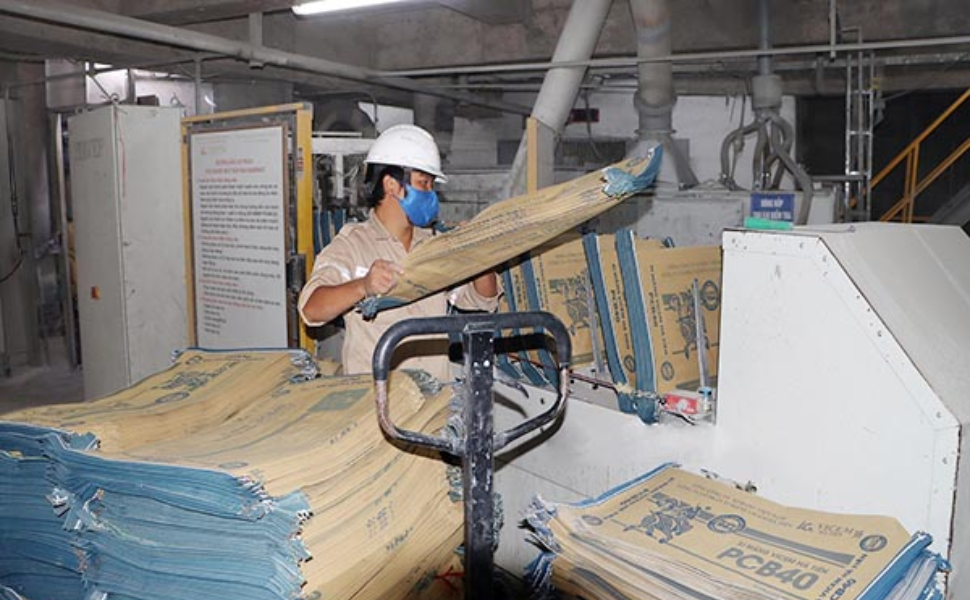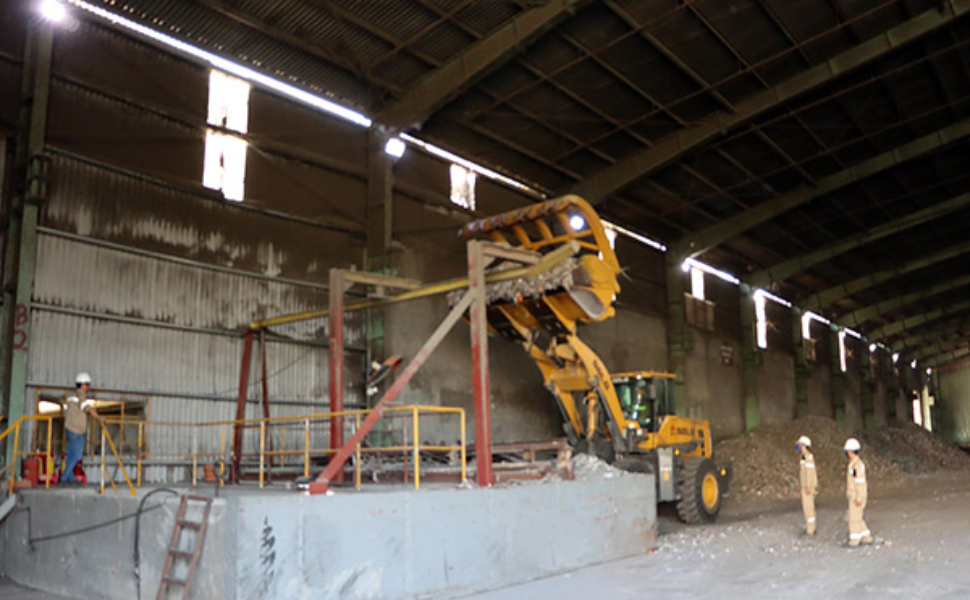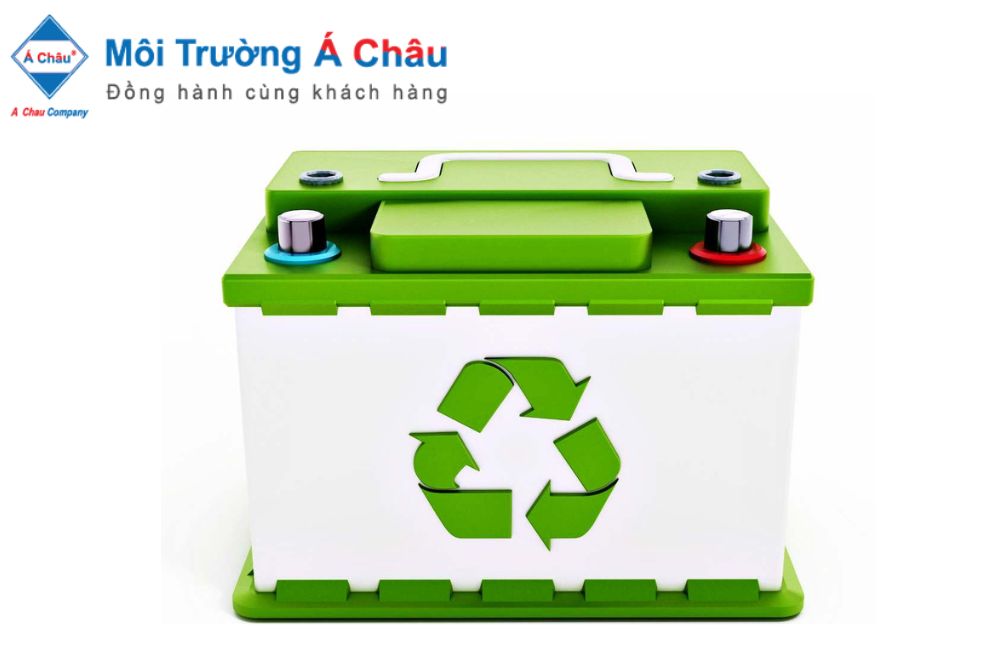Binh Phuoc Cement is developing a "Circular Economy" model for sustainable manufacturing.
Implement Decision No. 1266/QD-TTg of the Prime Minister on the Vietnam construction materials development strategy for the period 2021 - 2030, with an orientation to 2050, including the orientation of using recycled materials according to economic trends. In the Circular Economy, Binh Phuoc Cement Factory (Ha Tien Cement Joint Stock Company) has had practical and effective ways to turn waste into fuel. On average, it consumes 150 - 250 tons of waste per day. Each year, the factory can “eat” more than 90,000 tons of waste, which partly relieves the pressure of industrial waste.
Waste as Resource
Binh Phuoc Cement Factory produces around 2.1 million tons of clinker and approximately 1.3 million tons of cement per year on average. To address the risk of resource depletion, pollution, and environmental deterioration, the plant is progressively transitioning to a Circular-Green Economy, striving for Sustainable Development. Since 2013, the facility has been processing cashew shell deposits. By 2020, the plant will continue to invest in and employ a system for burning industrial solid waste such as rags, shoe bottoms, and waste products from the leather shoe sector as fuel to replace coal dust partially. Currently, the plant's alternative fuel ratio is between 25 and 30% of the total thermal energy utilized in clinker production.

Staffers at Binh Phuoc Cement Factory package products before exporting to the consumer market.
Mr. Nguyen Minh Nhat, Manager of the factory's raw materials workshop, stated that since the industrial waste treatment was implemented, hundreds of tons of garbage, such as cashew shells, rags, and soles, have been generated every day. To support the cement manufacturing process, the plant acquired shoes and industrial trash. Currently, we import more than 200 tons of garbage per day on average. Before being burned, particular imported waste will be examined, analyzed, and sorted. This strategy not only collects a large volume of industrial waste and reduces pollution but also allows enterprises to be proactive in part of their fuel supply, which is especially important during periods when coal supply is limited.
Mr. Nguyen Quoc Thang, Director of Binh Phuoc Cement Factory, affirmed that while the fossil fuel supply is increasingly scarce and prices are increasing, using waste as a replacement material is extremely necessary. Since using industrial waste, the factory's heat replacement rate has reached 25%. This contributes to saving production costs but does not affect the equipment system, productivity, clinker quality, or exhaust gas quality.
Functional Environmental Protection
The new technology is preferable because it boosts kiln productivity and cement grinding output and saves traditional raw resources. Furthermore, utilizing waste materials and industrial waste assists firms in lowering manufacturing expenses, product prices, environmental pollution owing to CO2 deflation, and landfill area.
Huynh Quoc Thanh, Head of the HSE Staff at Binh Phuoc Cement Factory, emphasizes the implementation of a closed-loop process for waste treatment. The factory screens input materials and controls dust and gas emissions through an automatic monitoring system. Display parameters, such as dust concentration, SO2, CO, and NOx gas content, are monitored within allowed thresholds. Any deviation from these limits is immediately sent to the Department of Natural Resources and Environment for inspection and monitoring.
The most significant advantage of the factory's waste treatment system is that all major emission characteristics, such as dust and gas concentration, are continuously monitored. The method leaves no ash and no waste, lowering CO2 and harmful emissions. All of the ash produced during waste heat treatment participates in physicochemical processes in the kiln, changing its original characteristics, forming minerals, and remaining in the cement clinker.
Lack of waste resources
Mr. Nguyen Quoc Thang, Director of Binh Phuoc Cement Factory, noted that the factory needs more than industrial waste to function in Binh Phuoc. To meet the factory's requests, we had to go via intermediaries for a lengthy time to import more raw materials from Binh Duong, Tay Ninh, and Dong Nai provinces.
Waste such as rags, shoe soles, and cashew shells, is segregated before being put into the incinerator.
Businesses, particularly those in the footwear and garment manufacturing industries, are facing several challenges as a result of the post-COVID-19 period and the crisis between Russia and Ukraine. As a result, the volume of imported waste has fallen dramatically. To satisfy client demands, we will continue to invest in technology and equipment systems to manage hazardous waste such as pesticide packaging, oil, and faulty goods in the manufacturing industry to meet the Company's requirements, Mr. Thang stated.
The waste treatment potential in the cement industry in general, and at the Binh Phuoc Cement Factory in particular, is huge. With the factory's existing capacity, 200-300 tons of trash must be imported every day. As a result, a vast number of waste is treated each year by making use of the "Co-processing" method, which recovers power, no secondary emissions, and no landfills, contributing to the protection of the environment and scenery.
Source: ximang.vn














